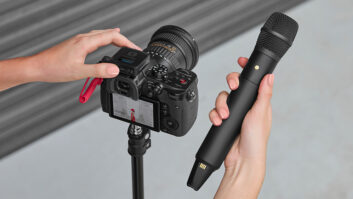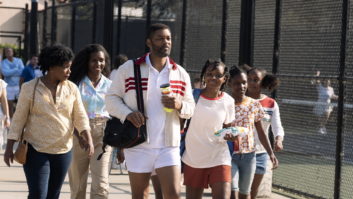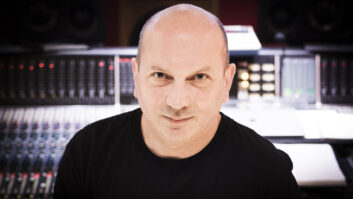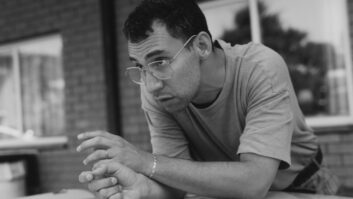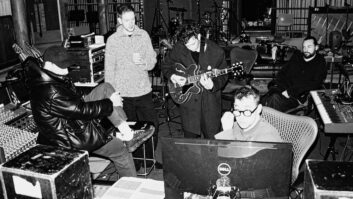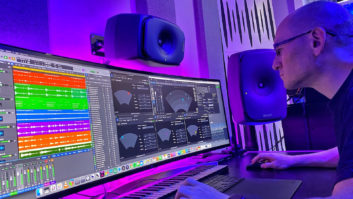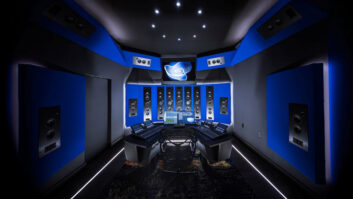How did you get into tape and machine restoration?
I bought a Wollensak T-1616-4 while in fourth or fifth grade and I soon found out you needed to spend as much money on the machine to keep it running as I had spent for the machine. So I got a Sams Photofact and learned how to take it apart and put it back together. In the 1970s, I had Revox A77s and an Ampex 350/440 hybrid that I put together for field recording (the A77s won out) and I did all the maintenance and alignment on them. I was working as an audio-video systems engineer at ABC-TV at the time and this was a side interest.
In 1997 or so, I met some folk singers who were worried about their tape collections and I was worried about what I had so I purchased a used Sony APR-5003V and started doing transfers. I was on the Los Angeles chapter board of the AES a couple of years later and asked Jim Wheeler to speak about tape degradation for the AES. He and I had developed a mantra: “just because you can’t play the tape doesn’t mean it’s trash.” He then asked me if I could play some 30 cm reels at 30 ips from the Jack Mullin/Bill Palmer collection and that was really the start. I later wrote an AES technical brief on the project (available here).
When NBC contacted me to transfer the Princess Diana interview tapes that Andrew Morton had used for his biography, I thought this could become interesting. I went into the business fulltime in the fall of 2004 with a move back to my wife’s hometown in Ontario.
Who are the people (customers and other technically savvy folk) you really count on for their ears or technical skills?
I developed a network of other tape restoration professionals and we all help each other–and sometimes even send work to each other. My first contact is my good friend Don Ososke who’s a musician first and who is often my “technical advisory board.” I have many other restorers and engineers who I speak with on a regular basis, including: Peter Brothers, Parker Dinkens, Tom Fine, Jamie Howarth, Paul Kraus, Graham Newton, Doug Pomeroy, Steve Puntolillo, Art Shifrin and Steve Smolian.
Who are the technicians you really respect in our biz?
This is a difficult question as I do almost all of my repair work myself. John French stands out as a head miracle worker and has crafted some wonderful custom head assemblies for me. He is an excellent machinist who understands what he is doing.
What is the range of time you might spend on rescuing a tape or machine?
Rescuing a machine can be a long process and it might be done in stages. I recently acquired four Studer A80RCs and while two of them are up and running, the bearing grease is getting old, so I want to re-bearing the machines–there are 30 ball bearings in each machine! With tape failures, the biggest challenge has been squealing tapes that don’t respond to baking. A year ago, I presented a paper at AES San Francisco, where I indicated that cold playback of squealing tapes had promise, as I had successfully played some tapes on a machine in a refrigerator. Until this breakthrough, we had spent tens of hours trying to get some of these tapes to play. We could coax them through with wet playing, but it was not the right answer. I recall one hour-long tape where we played it in one-minute segments and then spliced it back together in the digital audio workstation!
The worst time consumers are tapes that are supplied in a ball in a box and we have to untangle them. I can do about 300-500 feet an hour and it’s perhaps the most frustrating work. Mold cleaning takes at least a half hour per reel—we don’t do moldy cassettes at this point. Usually, with proper preparation, we can get as good a transfer as possible–and then fix what we need to later in the digital audio workstation.
Do you have pet peeves—things that really bug you?
Oh, I have several: Tape manufacturers’ lack of thorough study of tape; aging rim-drive tape recorders; current-model microcassettes that come off their hubs; CSI—for unrealistically raising expectations; and people who don’t break out the write-protect tabs on cassettes.
Are your customers patient?
Very patient—but I let them know this takes time and they understand. I try and take large projects on “safe” schedules because I don’t want to turn down other clients while one huge project is in process. Besides, variety keeps this work interesting.

